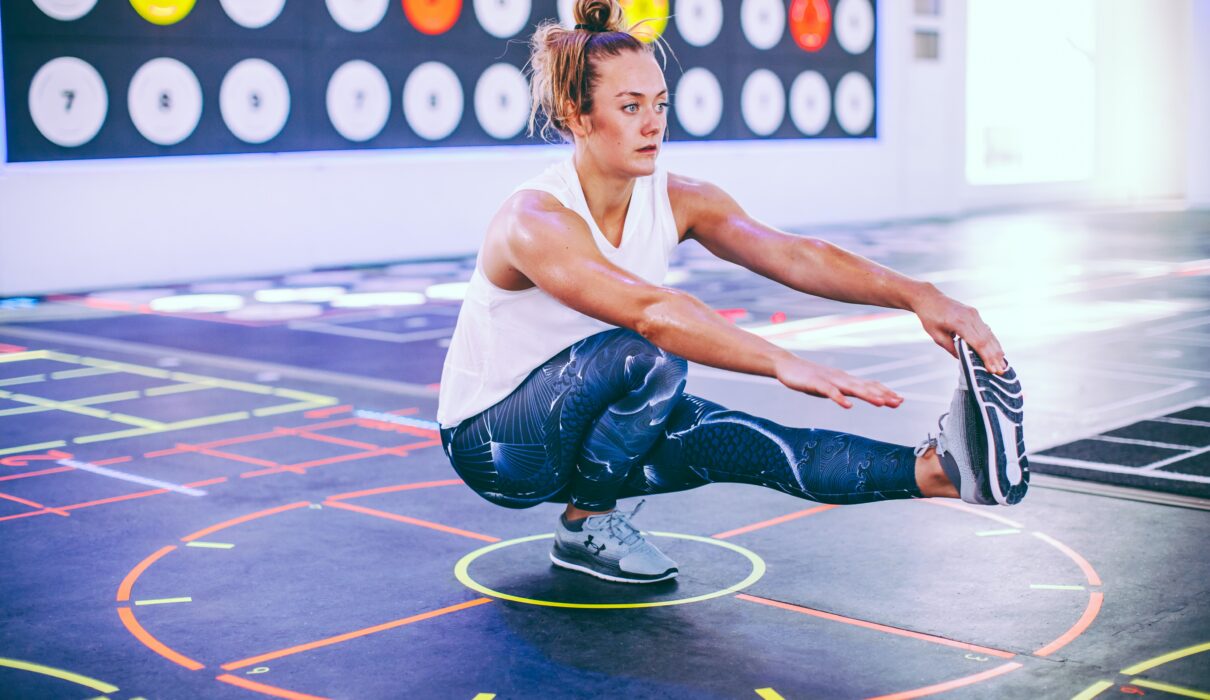Knee pain can be a common and debilitating issue that affects people of all ages and walks of life. However, women, in particular, often find themselves more vulnerable to knee pain due to a combination of anatomical, hormonal, and lifestyle factors. The good news is that by understanding the causes of knee pain and implementing targeted strategies, it’s possible to prevent and mitigate discomfort. Here, a personal trainer in Highett at a leading women only gym will look at the reasons women are prone to knee pain, explore effective preventive measures, and introduce exercises that can help maintain pain-free knees and healthy functional movement.
Why women are vulnerable to knee pain
There are several reasons why women are more susceptible to knee pain compared to men:
- Anatomical differences: Women tend to have wider hips than men, resulting in a slightly different alignment of the thigh bones in relation to the knee joint. This can increase the angle between the hip and knee, potentially leading to increased stress on the knees during movement.
- Hormonal factors: Hormones, specifically oestrogen, play a role in joint laxity. During the menstrual cycle, oestrogen levels fluctuate, which can impact ligament stability and potentially increase the risk of knee injuries.
- Muscle imbalances: Muscle imbalances, such as weaker quadriceps and stronger hamstrings (which are very common, even in very fit women!) can alter the biomechanics of the knee joint. This imbalance can put additional strain on the knee, leading to discomfort and pain.
- Footwear and fashion choices: High heels and poorly fitting shoes can alter walking patterns and increase pressure on the knees. Additionally, the prevalence of tight-fitting clothing may restrict knee movement and contribute to discomfort.
Preventing knee pain: Strategies for success
Preventing knee pain requires a multi-faceted functional movement approach that addresses various aspects of lifestyle and health. Here are some effective strategies from a top personal trainer in Highett:
- Maintain a healthy weight: This is not about being skinny! Everyone’s body shape is unique, but when we put on excess body weight, we get stress on the knees, increasing the risk of pain and injury. Maintaining a healthy weight for your body shape through balanced nutrition and regular exercise can significantly reduce this risk.
- Proper footwear: Choose supportive, well-fitting shoes that provide cushioning and stability. High heels and shoes with inadequate arch support can alter walking mechanics and contribute to knee pain.
- Warm-up and stretching: Prior to exercise or physical activity, warm up your muscles with dynamic stretches and movements, or even a slow walk on a treadmill. Incorporate static stretching after workouts to maintain flexibility and joint mobility.
- Correct movement patterns: Ensure you’re using proper form and alignment during exercises and daily activities. Proper functional movement patterns can reduce stress on the knees and prevent pain.
- Strengthening exercises: Incorporate strength training exercises that focus on the muscles surrounding the knee joint, including the quadriceps, hamstrings, and calf muscles. A strong support system of muscles helps stabilise the knee and reduce the risk of pain.
- Cross-training: Engage in a variety of physical activities to strengthen your core and avoid overloading the knees with repetitive stress. Mixing activities such as swimming, cycling, yoga, and strength training can help maintain knee health.
- Low-impact cardio: Participate in low-impact cardiovascular exercises like swimming or using an elliptical machine at our women only gym. These activities provide a cardio workout without excessive strain on the knees.
Exercises to prevent knee pain
Here are some effective functional movement exercises recommended by a leading personal trainer in Highett that you can incorporate into your routine that can help prevent knee pain and promote overall knee health:
- Leg raises: Lie on your side and lift your top leg, keeping it straight. Lower it back down without letting it touch the bottom leg. This exercise targets the outer thigh muscles, which support knee stability.
- Wall squats: Lean against a wall with your feet hip-width apart. Slide down the wall as if sitting in an imaginary chair, ensuring your knees don’t extend past your toes. Hold the position for a few seconds and then stand back up.
- Step-ups: Use a step or platform to step up and down, alternating legs. Keep your movements controlled and engage your core for balance.
- Clamshells: Lie on your side with your legs bent at a 90-degree angle. Keep your feet together and lift your top knee while keeping your feet touching. This exercise targets the hip abductors, which play a role in knee stability.
- Hamstring curls: Lie on your stomach and bend your knees, bringing your heels towards your glutes. Hold for a few seconds and then slowly lower your legs back down.
- Straight leg raises: Sit on a chair with your back straight and legs extended. Lift one leg straight out in front of you, hold for a few seconds, and lower it back down. This exercise strengthens the quadriceps muscles.
- Calf raises: Stand with your feet hip-width apart and rise onto your toes. Lower back down and repeat. This exercise targets the calf muscles and helps support the knee joint.
Get all the support you – and your knees – need at our women only gym!
Remember that individual needs may vary, so it’s important to chat to a personal trainer like those at our women only gym before starting a new exercise program, especially if you’re dealing with existing knee pain or injuries. By nurturing your knees with care and targeted functional movement exercises, guided by a personal trainer in Highett, you can minimise risks to your knees and enjoy your active, vibrant lifestyle!


